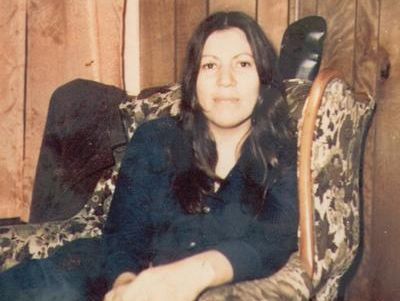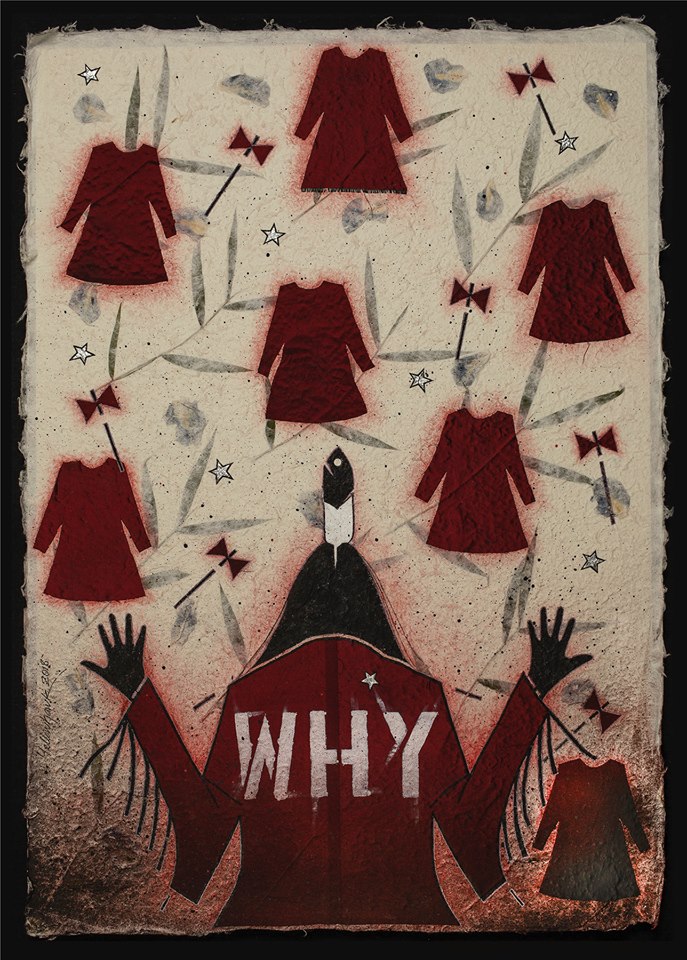Anna Mae Pictou Aquash: One of the murdered and missing women
By Richie Richards
Native Sun News Today Correspondent
nativesunnews.today
PIERRE – As tribal members from across the nation and Canada rally around the MMIW movement, this past weekend marked the date when one of the original missing and murdered indigenous women was found
executed on the Pine Ridge Indian Reservation.
On February 24, 1976, the lifeless body of
Anna Mae Pictou Aquash was found in the Badlands on State Road 73 by rancher, Roger Amiotte, while he was out checking fences on his land. Missing for two months, Aquash was found after it was rumored she was last seen on the Pine Ridge Indian Reservation in December, 1975.
Immediately following the death of Aquash, rumors began to swirl of the Mi’kmaq woman’s untimely death which was later
determined to be at the hands of
members of the American Indian Movement. During this period of pre-investigation by authorities, stories were being told by tribal members who had heard various versions of how she had met her demise.
These rumors created a hysteria around the young First Nations woman’s murder, which included everything from being an informant, to victim blaming and victim shaming, to being promiscuous and irresponsible, and a pawn in a game which was much larger than her single life. She was tortured before her murder as a result of the knowledge she may have had in her possession.
Anna Mae Pictou Aquash was a Mi'kmaq activist who was murdered in 1975 by members of the American Indian Movement. Photo: Canadian National Film Board
Anna Mae Pictou Aquash was one of the original missing and murdered indigenous women whose life and death helped to begin the current mission of the MMIW movement. Her story is common in Indian Country, as it reflects on the rumors and gossip told around stories of missing and murdered tribal members. Missing from this movement, up until very recently, is the formation of accurate records of individuals’ lives who have been murdered or have gone missing.
This accurate record keeping of MMIW and others from Indian Country, has begun in very recent years. South Dakota has begun a campaign which will reach a national audience through the collaboration of the Great Plain’s Tribal Chairman’s Association, Rocky Mountain Tribal Leaders Council and the Global Indigenous Council. This collaborative effort began in Jan. 2019 with a billboard campaign and other forms of reaching out to the public. These billboards began to appear in Rapid City before spreading to other areas of the United States.
The isolated areas of tribal territories which are located near interstate corridors which connect major cities along their route are perfect place for human traffickers to choose their victims.
In mid-February, 2019, a bill which would require the Division of Criminal Investigation to begin setting guidelines for data collection of possible MMIW cases had advanced in the South Dakota senate committee. Senator Lynn DiSanto was the prime sponsor of the bill and State Representative Tamara St. John has supported the bill throughout.
House Bill 1237 sponsors included; Representatives Pourier, Bordeaux, Duba, Healy, Smith, St. John, and Sullivan and Senators Foster, Blare, Heinert, Kennedy, Maher, Nesiba and Wismer. The purpose of HB 1237 was to “establish the duty to collect data and share information on missing and murdered indigenous persons.”
House Bill 1238 included the same sponsors from HB 1237 and its purpose was to “revise provisions regarding training on missing and murdered indigenous persons.”
This is a major step forward for families seeking justice and help from the state in finding their loved ones and bringing perpetrators to justice.
Several individuals testified during the senate hearing, including members of the
MMIW He Sapa (Black Hills). This group had organized the MMIW March on February 14, 2019. This march was attended by dozens of people who support the movement, but several attendees had family members who were among the MMIW in recent history.
The efforts of the grassroots community members and legislators is working to improve the information available to the public and investigators, in hopes that it will help to solve some of the cases of the past and in recent memory.
Most recently, the Journey Museum in Rapid City held an event “Missing and Murdered Indigenous Women and Children” on February 24, 2019. This awareness campaign
helped to kick off the “WHY” Campaign. This is a collaboration between the Journey Museum and the
Red Ribbon Skirt Society of the Black Hills.
Contact Native Sun News Today Correspondent Richie Richards at richie4175@gmail.com
Copyright permission Native Sun News Today
Join the Conversation



